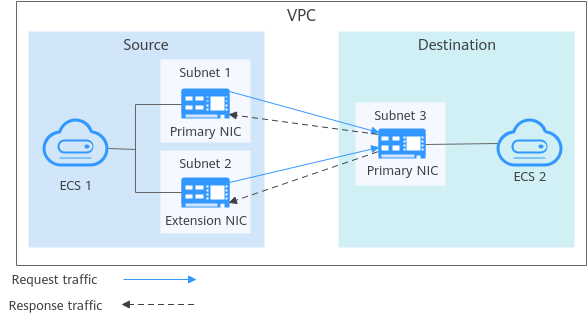Overview
Background
If an ECS has multiple NICs, the primary NIC can communicate with external networks by default, but the extension NICs cannot. To enable extension NICs to communicate with external works either, you need to configure policy-based routes for these NICs.
Scenarios
- The primary and extension NICs on the source ECS are in different subnets of the same VPC.
- The source and destination ECSs are in different subnets of the same VPC and the two ECSs can communicate with each other through primary NICs without configuring policy-based routes.
- After policy-based routes are configured for the two NICs of the source ECS, both the primary and extension NICs can communicate with the destination ECS.

You can select a destination IP address based on service requirements. Before configuring policy-based routes, ensure that the source ECS can use its primary NIC to communicate with the destination ECS.
Feedback
Was this page helpful?
Provide feedbackThank you very much for your feedback. We will continue working to improve the documentation.







